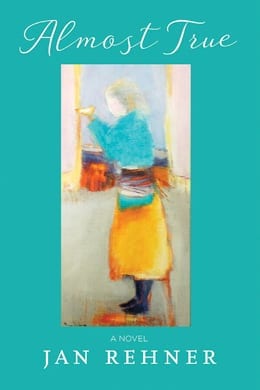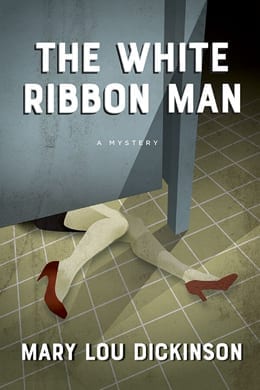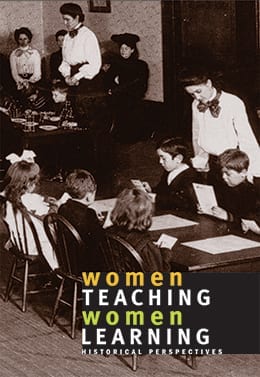Who is the mysterious woman in the Matisse drawing, Woman in a Blouse, Dreaming? What secrets is she hiding? Chloe Rea grew up with the Matisse sketch and believes the woman in the famous Rumanian blouse is her grandmother. But the sketch now belongs to Adam Jensen, who inherited it after his brother’s sudden death in the south of France. Now Chloe wants the sketch back, but someone else is willing to kill for it. When a prominent art dealer in Toronto is murdered, Chloe and Adam flee to France to walk in the footsteps of Matisse and the beautiful Russian named Lydia Delectorskaya, an orphan who became Matisse’s muse, model, caregiver, administrator, and companion for twenty years. Her remarkable story, set amid the darkness and treachery of wartime Nice, holds the key to a missing masterpiece.
“The multi-talented Jan Rehner, winner of the Arthur Ellis Best Canadian First Crime Novel in 2004 for Just Murder and an ippy award for On Pain of Death, turns her eye to the art world in this suspenseful novel. Matisse’s paintings, drawings, and stained glass splash bright colour against the dark hues of the war. The prose is as rich as the multi-layered plot and the book’s playful title. The answers to the tantalizing identity of Matisse’s model and meaning of life itself reside in the brush of an old man squinting in the sun as he paints one perfect pear.”
—Lou Allin, author of She Felt No Pain
“Jan Rehner is magical with pen, geography and character development, never mind art history. What a world she builds! She has once again created a magnificent story of intrigue and murder set primarily in France during World War ii. Missing Matisse is a remarkable story, a gem, a page-turner, at once captivating and reflective. Reading this mystery is like peering into a funnel that picks you up early and lets you down again very slowly. Brilliant, filmic writing; compelling, brave, complex characters, mostly women; “true stories” about Matisse, his model, Lydia, and Lydia’s connection to Canada through Chloe’s courageous grandmother, Sylvie. ”
—Marlene Kadar, Tracing the Autobiographical and Photographs, Histories, Meanings; Editor, Life Writing Series, Wilfrid Laurier Press
“Told with a gentle humour entirely in keeping with the master painter of the title, Missing Matisse offers a mystery, a romance (or two), and above all a feisty, unpredictable heroine. A swift, entertaining read.”
—Giles Blunt, author of Forty Words for Sorrow and Crime Machine








InannaWebmaster –
by Lou Allin, author of She Felt No Pain
April 2011
“Masterpieces vanished into the mists of time offer an endless source of speculation. Rumours have surrounded the prolific Matisse, especially since he and his works were swept up in the chaos of World War II, when collections were pillaged in every occupied country. The venerable painter, who refused to leave France, had many women “taking care” of him either as housekeepers, nurses, or models. The secrets which lie in their letters, diaries, and conversations led to the hypothesis of this charming and provocative book.
The multi-talented Jan Rehner, winner of the Arthur Ellis Best Canadian First Crime Novel in 2004 for her Just Murder and an IPPY award for On Pain of Death, turns her eye to the art world in this suspenseful novel. The initial nail-biting scene concerns a woman stalking a man on the streets of modern-day Toronto. He has something she wants desperately, and she’s not afraid to risk her reputation to get it.
Chloe Rea, herself an artist and teacher, covets a simple but stunning Matisse drawing, which she feels that her grandmother Sylvie posed for over half a century ago and which had belonged to her family before it disappeared, stolen or sold. She wears the same unique ring in that glorious depiction of a “Woman in a Blouse, Dreaming,” a cryptic name like those given to so many of Matisse’s oeuvres. Traditionally, he made many sketches which later became paintings. Could this be the case?
Her obsession leads her to befriend a handsome professional man equally as captivated by the enigma. Soon they become involved in a murder, which introduces them to shadowy characters who operate with their own rules. Even in quiet Toronto, forces at work behind the scenes baffle the police. A genuine Matisse with provenance could fetch forty million dollars at auction. The risks are worth the high stakes.
Soon Chloe finds herself in Europe, chasing down anyone who might have borne witness to Matisse’s final days or knew someone who did. On a hidden piece of paper, she has discovered mysterious initials which don’t seem to belong to the known players. Adam, her partner, also must deal with the fact that his brother might have been murdered over this masterpiece. Reality, dreams, nightmares. The couple is propelled forward by each tempting clue.
Dealing one smooth hand of cards after another in a mixed perspective, Rehner skilfully juxtaposes scenes from the past in Matisse’s busy household, forced to move just beyond the reach of the Nazis’ snares. Life is cheap in occupied France. Yet as the lights go out across Europe, the Underground holds the hope that the Allies will liberate the nation. But who can be trusted? People disappear, never to return. Only Matisse’s international reputation keeps him “safe” from prosecution. As France is overrun and the candles gutter, he paints on, ensuring his legacy.
Chloe moves closer to her goal in the present as the war accelerates in the past. But whether in modern day Paris or the sunny patios of Nice and its orange and olive groves in Cimiez, there is always time for a baguette and glass of wine. Fighting his mortality, Matisse’s paintings, drawings, and stained glass splash bright colour against the dark hues of the war. His model speaks poetry: “Cotton, soft as silk, caresses my skin. Embroidered threads of scarlet, sunflower yellow and black, against a background of snow white, dance across the sleeves and bodice of the blouse. It has become, I have become, a garden of delicate flowers and swirling leaves.”
The prose is as rich as the multi-layered plot and the book’s playful title. Everything is in the eye of the beholder, as Matisse says. “It’s better to risk ruining a likeness than compromising a painting. You have to move beyond surfaces and the shackles of convention.” The answers to the tantalizing identity of the model, the existence of the drawing’s oil double, and meaning of life itself reside in the brush of an old man squinting in the sun as he paints one perfect pear.”
InannaWebmaster –
Book review highlights:
Winter 2012, Herizons Magazine (pg. 42)
“Missing Matisse is a fast-paced novel that moves relentlessly towards its striking resolution. Yet it meanders enough to allow the reader to live vicariously in Matisse’s world and in World War II France. The characters are very believable, with human flaws that would have pleased a Fauvist like Matisse. The sense of loss I felt when I put the book down was compensated by the sense of anticipation I felt at the urge to revisit Matisse’s art.”
September 6, 201, Canadian Bookworm blog review:
<http://cdnbookworm.blogspot.com/2011/09/missing-matisse.html>
“Intrigue, subterfuge, and romance all bring this story [Missing Matisse] to life. The art history was interesting and I learned a lot I didn’t know, always a plus. A good read.”
June 2011, Quill and Quire
“In choosing to examine this aspect of Matisse’s life, Rehner provides an excellent subject for the historical part of the novel: a compelling relationship shrouded in mystery. Indeed, the sections dealing with Matisse and Lydia are gripping.… The novel is hard to put down: the art world Rehner chooses as her milieu is a fantastic place, and the author does a good job of dramatizing how some people obsessed with beauty are capable of killing for it.”
InannaWebmaster –
Review of Missing Matisse
February 26, 2012
Reviewed by Jack Batten (WHODUNIT)
“This charming, if mildly blood thirsty, mystery gives off the warmth of the great Matisse’s famous shades of Nice blue. And that’s the point. Rehner, a Toronto writer, takes the novel’s Toronto heroine on the hunt for a painting by the master that’s gone, yes, missing. The sleuthing covers much geography, from Toronto to Paris and the Cote d’Azur. And, with the agency of flashbacks, it travels into the past life of Matisse himself. The mystery’s not bad; the insights into Matisse and his work are even better.”
Jack Batten is a Toronto author and freelance writer. His Whodunit appears every two weeks.